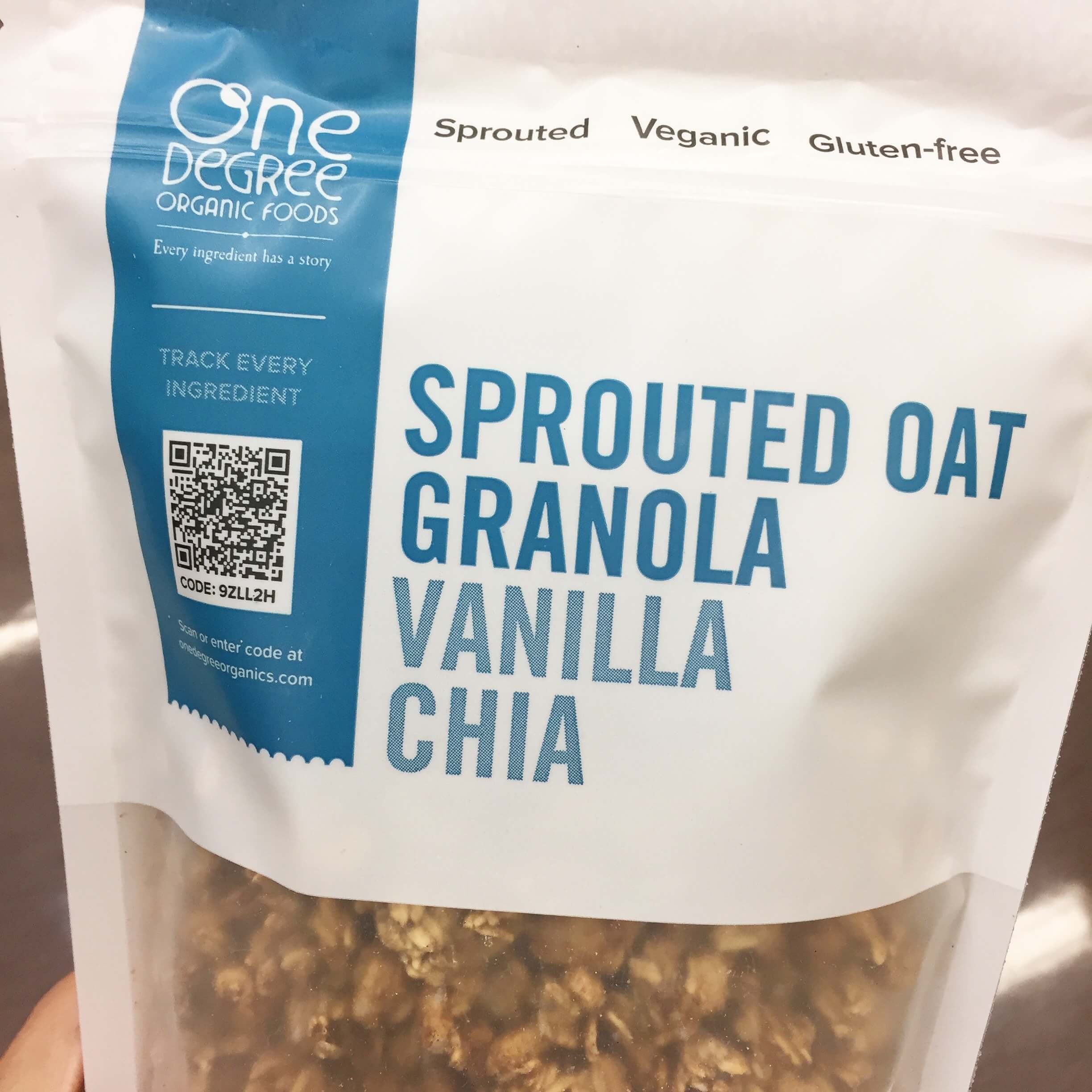Sprouting Grains is something that has been happening for thousands of years as a way to help cultures consume grains and digest them better. That is, right up to the past few decades. It seems like now sprouted grains are a mystery to most, even though it was common practice a century ago.
And with the rising amount of people who find grains and even some legumes hard to digest, it wouldn’t be surprising that the drop in the ability to digest these foods went up as the amount as the amount of sprouting we did to them went down.
How Long Have We Been Consuming Grains?
There has been a lot of controversy surrounding the debate on how long people have been eating grains, and if you are following the Paleo trend, you most likely side with the idea that eating grains are a more recent development in human history. However, some research suggests that humans have been eating grains for the past 105,000 years. A study published in 2009, in the journal Science, showed that evidence had been found in an ancient African cave of people baking bread. Different communities debate whether or not ancient people would have had the tools to process and consume grains, but the evidence seems pretty convincing. In this Mozambique cave, researchers found ancient stone tools dating back to 105,000 years along with seeds from sorghum grass [1].
What is “Sprouting” a Grain?
Sprouting a grain is the act of letting it soak in water to get it to germinate. This causes the grain to go through some biological changes before you eat it.
What are the Health Benefits of Sprouting?
The first change that happens when grain is sprouted is the increase of healthy nutrients that it has. The second change is the decrease in the number of anti-nutrients inside of the grain. Both of these changes contribute to why sprouting the grain helps make it healthier.
The two changes in the grains after sprouting boost the health benefits of the plant. You can sprout things like rice, lentils, beans, oats, flour and many other grains. So let’s break it down into two parts.
The Nutritional Boost
Protein Increase:
The first change the grain goes through is the increase in nutrients when it germinates. In studies sprouting a grain or lentil lead to a slight change in the quality of the protein in the seed when legumes and grains are combined. Because some diets that are low in meat consumption, or do not even consume meat, the slight increase can be helpful [2].
Amino Acid Increases:
The sprouting also slightly increases the amino acid lysine but can also significantly increase a load of other nutrients. Lysine can help the body use the protein available in the plant more efficiently. These other nutrients include folate, fiber, Vitamin E and C, and Beta-Carotene [3, 4].
Increased Fiber:
In certain seeds, the fiber content of the plant can increase after it’s sprouted. It’s also made more available to the body so that it can be utilized. Fiber is good for the body in several ways [5].
Fiber is beneficial for your body because it feeds the good bacteria found in your gut [6]. This high fiber content has a variety of health benefits on its own, such as blood sugar control, managing a healthy weight, improving the immune system and having a positive effect on brain function [7, 8, 9, 10, 11].
Fiber is also used by the body to reduce blood sugar spikes and lower cholesterol [12, 13].
Overall Increased Digestion:
Sprouted cereal grains have shown an improved digestibility of storage proteins and starches, and with an increase of gluten sensitivities on the rise, it is helpful to know that sprouting wheat degrades the gluten protein [14, 15].
The Decrease in Anti-Nutrients
The second change a grain goes through is the decrease in the anti-nutrients but to the change in phytates. The phytates in grains are naturally decreased when they are sprouted. Now I want to be clear that it helps to decrease the amount and does not eradicate them [16].
In fact, foods like brown rice should be sprouted. White rice has less phytates because they are found in the bran of the rice while is removed in the process of processing white rice [17]. White rice has fewer anti-nutrients and therefore allows the body to absorb more of its nutrients during digestion.
I would suggest if you do not have an insulin resistance problem, then eating white rice would be ideal, followed by sprouted brown rice.
The enzyme inhibitors in the seeds prevent the seeds from spontaneously germinating but can make the nutrients harder to access. Grains and legumes that get sprouted do show a significant drop in enzyme inhibitors after sprouting which allows your body to digest it better [18]. The next thing that helps with digestion is cooking the sprouted seed further and helping break it down more [19].
Decrease in Allergens:
A study published in Bioscience, Biotechnology, and Biochemistry showed that using sprouted brown rice showed a reduction in the allergen proteins in comparison to a pre-germination stage. This act of sprouting the rice degraded the allergen proteins contained within [20].
What Shouldn’t You Sprout?
There are a few types of plants that you should never try to sprout. Kidney beans are toxic when sprouted and if sprouted, they that should never be eaten. Other beans that you should not sprout as they can be toxic and cause stomach issues are: lima beans, black beans, horse beans, runner beans, garden beans, and chickpeas.
What’s the Difference in Soaking vs Sprouting
One thing about beans and grains is that they can be soaked overnight to help break down the phytic acid and enzymes inhibitors. Soaking is effective for beans and rice in helping break these two digestive disruptors down and can be done in a shorter amount of time than sprouting for the benefits. They can be soaked for part of the day, or overnight (12 hours max). This process also makes beans quicker to cook. However, for the rest of the benefits of sprouting, you must move on to the next step.
How to Grow Your Own Sprouts
Sprouting your own grains is simple and a great way to increase the nutritious value and bioavailability. All are you need are is a mason jar, a piece of cheesecloth and a rubber band, sprouting seeds, and a small bowl to prop your jar at an angle.
Once you have these things, the directions are simple. Pour your seeds, about 1 teaspoon (¼ cup if you are sprouting beans or lentils). When you purchase your seeds be sure they say that they are organic sprouting seeds.
Add 1 cup of filtered water to the jar and cover the top of the jar with cheesecloth. Pull the cloth tight and secure it on with a rubber band. Let your seeds soak overnight and then drain the water from the seeds by using a fine strainer, as not to lose any of the seeds. Rinse the seeds and put them back into the jar and secure the cheesecloth back on.
Using the small bowl, tilt your jar upside down at an angle. This tilt will allow the excess water in the sprouts to continue to drain through the cheesecloth.
Your seed should sprout in 3-5 days and sprouts can be up to 2 inches long. During this time you should continue to rinse the seed periodically, a couple of times a day or at least every 12 hours. Once complete your seeds are ready to be eaten and should last about a week inside the refrigerator. While you are storing the sprouts in the refrigerator, you should continue to wash them daily and place them into a new bowl to avoid mold from forming.
While the benefits of sprouting are insane and a great way to boost your health when eating these foods, the art of sprouting them yourself might be more than more people want to, or have time to, take on. However, for those of you who want to have some fun, learn something new, and might want to make a hobby out of it. Go ahead and give it a try!
What Sprouts are Easiest to Work With:
Some seeds can be difficult to sprout, as they can become mushy in texture, such as chia seeds, flax, and hemp. There are, however, many more popular choices to choose from, such as barley, broccoli, buckwheat, chickpeas, lentils, pumpkin seeds, sesame seeds, radish seeds, sesame seeds, sunflower seeds, quinoa, wheat berries, and wild rice.
What are Some Sprouting Concerns:
One of the issues that you can run into when sprouting your seeds, especially if you are going to be consuming them raw is the harmful production of certain bacteria. This is why it is extremely important to continuously rinse your seeds throughout the entire sprouting process. This will reduce the chances of bacterial growth. Once you have sprouted your seeds, you should eat them as quickly as possible to avoid letting them grow mold and bacteria.
If you follow the guidelines provided for you above, you should be just fine.
Where Can I Buy Sprouted Grains?
Due to difficulty and time, I opt to buy my grains sprouted already. Many stores are now carrying sprouted grains and legumes right in the regular grocery section. Tru Roots is a brand I swear by! Whole Foods has sprouted oatmeal and grains right in the bulk section as well as in the grains and beans sections of the store.
Plus even pre-made foods are “sprouting” (hehe get it!) up everywhere like Ezekiel bread and this fun granola I found at Sprouts. I have also found packs of live sprouts like bean and clover sprouts in the refrigerator section.
What Sprouted Foods do I Eat?
On a regular basis, you’ll find several sprouted things in my pantry. The first is sprouted rice. I eat a lot of rice each week along with keeping sprouted lentils and quinoa.
And for breakfast, I now stock a large jar of sprouted oatmeal. I find this in bulk at Whole Foods. In the freezer, I keep sprouted bread and sprouted English muffins because it says fresher for longer. They also make sprouted English muffins in a cinnamon raisin flavor that I just love. My favorite brands for these are Ezekiel Bread and the Trader Joe’s brand of sprouted bread. I usually look for these in the freezer section of my grocery store because the packs are too large for me to go through when I order from Amazon. And for those of you who like pancakes or have kids, this sprouted mix is perfect to keep in the pantry for breakfast.
I also eat sprouted tortilla wraps. These come into play daily in my life whenever I’m in the mood for tacos (which you know is quite often!) of want something quick and easy to eat.
And my newest find… this sprouted granola. Great snack idea for anyone.

I use Amazon for finding sprouted products that my store may not have. But between the grocery store and Amazon, I usually can find anything I need. Another place that I have been finding a big selection of sprouted grains is Thrive Market. This online store has a whole line of really good sprouted products.
If you’re looking to start incorporating sprouted grains to replace your regular ones, then call your local grocer and ask for them to carry some sprouted products if they don’t already. And of course, if that’s not possible using online stores like Amazon and Thrive Market can help you get these food delivered to your door.
Introducing sprouted grains into my diet, as a replacement for the bread and grains I was already eating, made a huge positive impact on my digestion. I didn’t have to give up grains for health and still enjoy them in my diet. If you also have a great story to share about sprouting grains or are just trying them, share in the comments.


